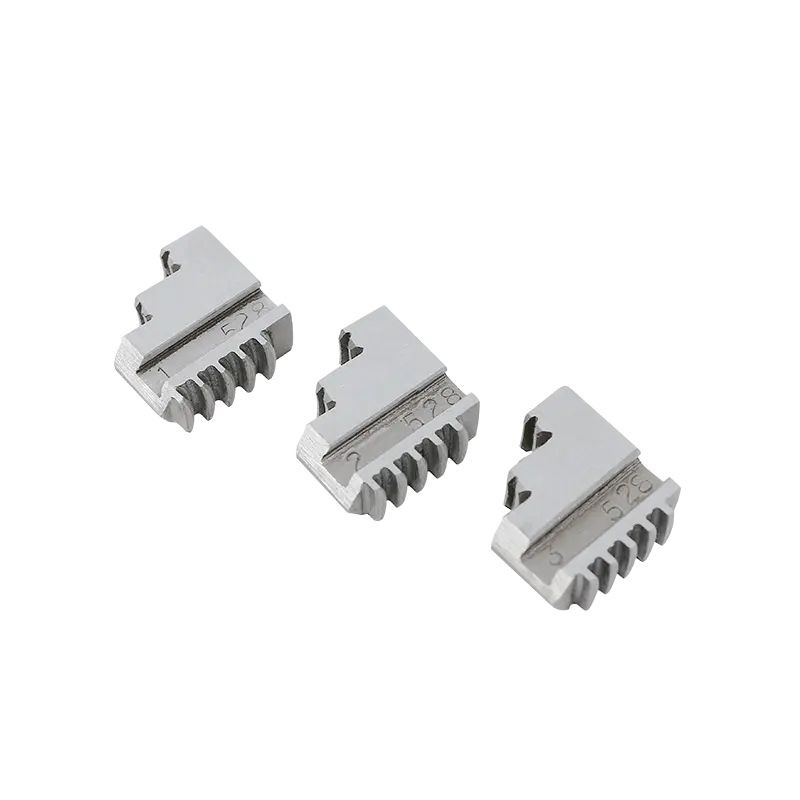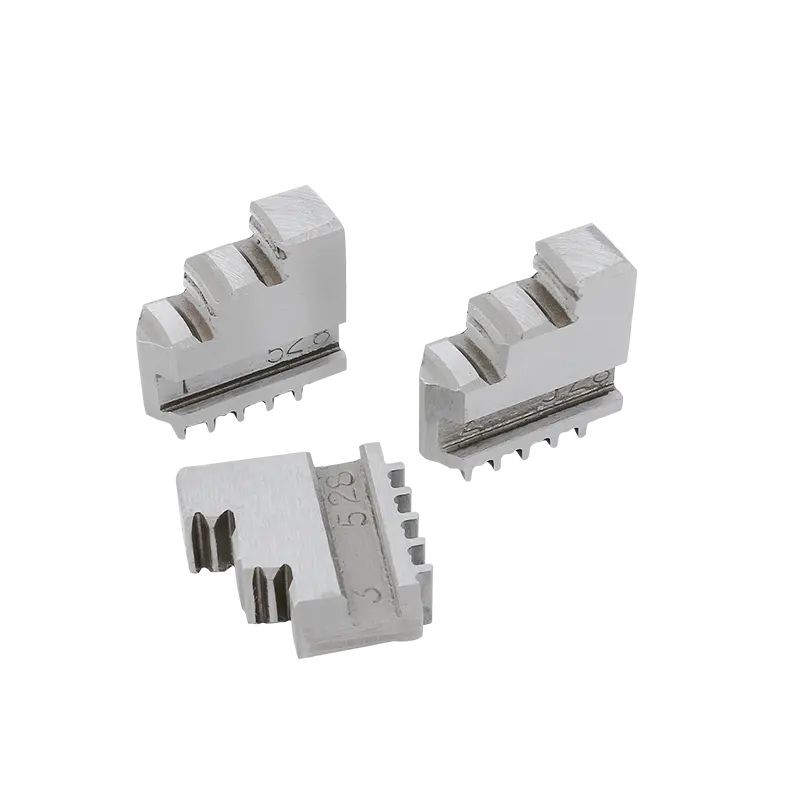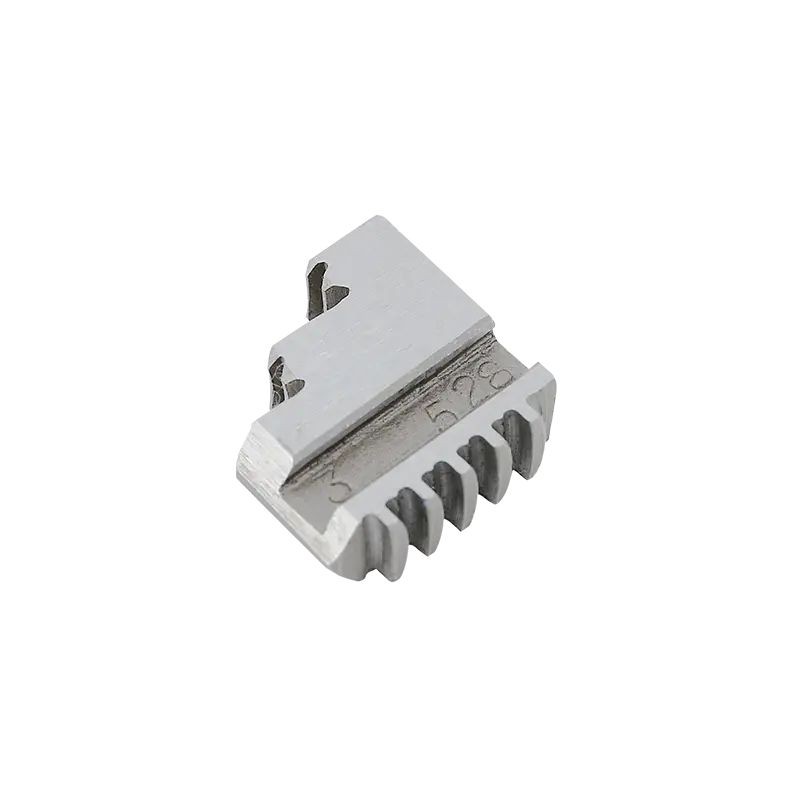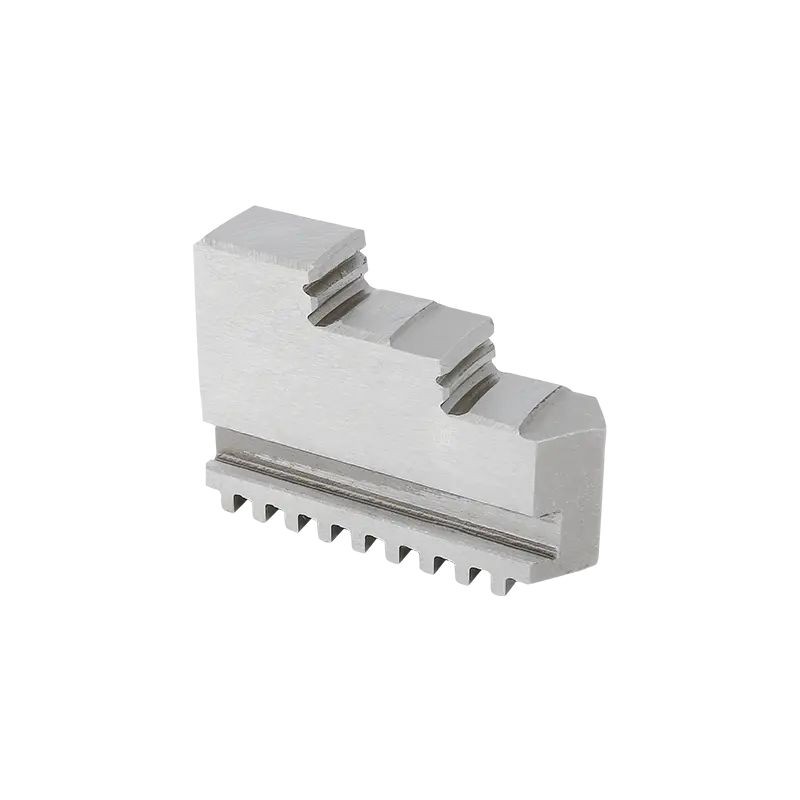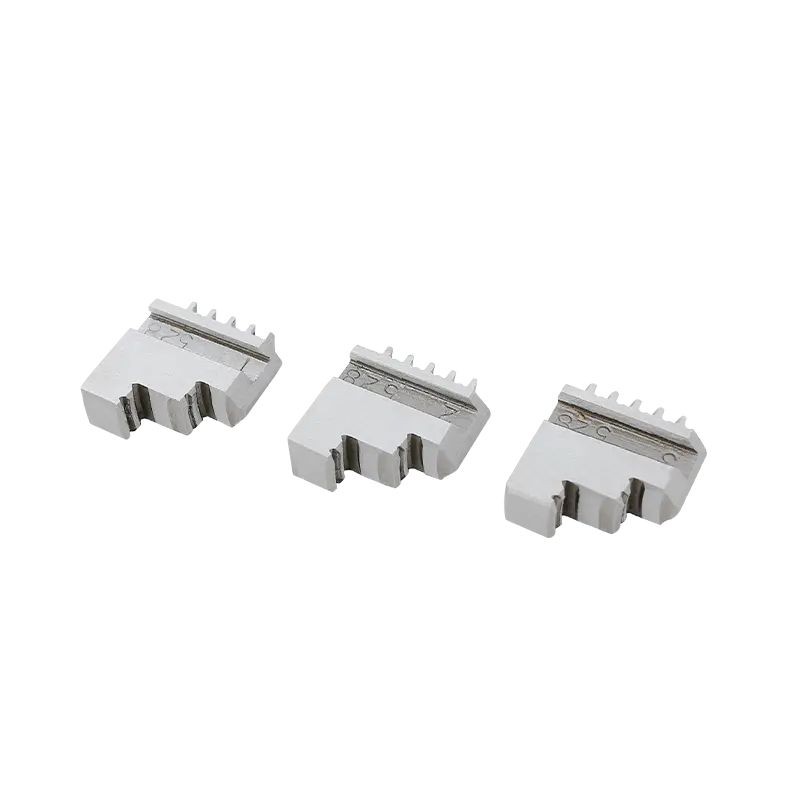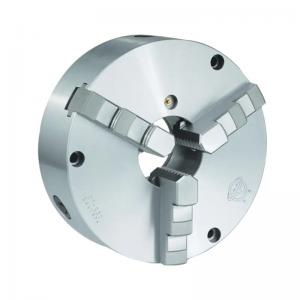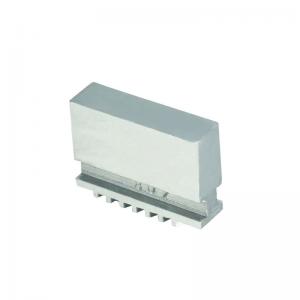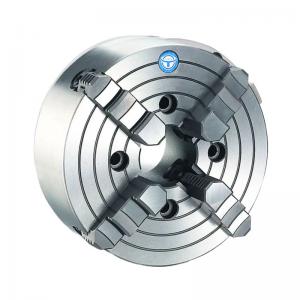one-piece-jaws-14 one-piece-jaws-15 kz1 kz3 kz kz4 One-Piece Jaws
- Category: Soft Jaw
- Product description:Manufacturing One-Piece Jaws Factory in China is ODM Custom Soft Jaws Wholesalers, so among the various types of chuck jaws available, one-piece jaws have gained popularity for their significant contr
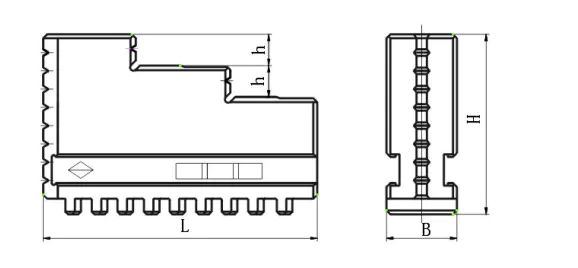
|
Size
|
80 | 100 | 125 | 130 | 160 | 165 | 190 | 200 | 240 | 250 |
315 320 325 380 |
| L | 32 | 42 | 56 | 56 | 70 | 70 | 85 | 85 | 105 | 105 | 130 |
| B | 12 | 15 | 16 | 16 | 18.5 | 18.5 | 22 | 22 | 27 | 27 | 36 |
| H | 33 | 38 | 45 | 45 | 54 | 54 | 61 | 61 | 69 | 69 | 86 |
| h | 6.5 | 7 | 9 | 9 | 12 | 12 | 12 | 12 | 12 | 12 | 18 |
The Contribution of One-Piece Jaws to Chuck Systems
Chuck jaws are essential components of a chuck system, serving the crucial role of securely gripping and holding workpieces during machining operations. Among the various types of chuck jaws available, one-piece jaws have gained popularity for their significant contribution to the overall performance and efficiency of a chuck system. In this article, we will explore how one-piece jaws enhance the functionality, precision, and productivity of chuck systems, ultimately leading to improved machining outcomes.
(1)Simplified Design and Installation
One of the key advantages of one-piece jaws is their simplified design and installation process. Unlike multipart jaws, which require assembly and alignment, one-piece jaws are manufactured as a single unit. This simplicity reduces setup time and minimizes the risk of misalignment during installation, ensuring a faster and more efficient chucking process.
(2)Enhanced Accuracy and Repeatability
One-piece jaws contribute to enhanced accuracy and repeatability in machining operations. With their single-piece construction, they provide consistent and uniform clamping forces across the entire gripping surface. This uniformity leads to improved workpiece stability, reduced vibrations, and higher precision during machining processes. The repeatable clamping force ensures consistent results, allowing for greater accuracy in producing complex components.
(3)Increased Rigidity and Stability
The single-piece construction of one-piece jaws provides enhanced rigidity and stability compared to multipart jaws. The absence of separate components or fasteners eliminates potential points of weakness, improving overall jaw strength and resistance to deflection. This increased rigidity ensures a secure grip on the workpiece, reducing the risk of slippage or movement during machining operations, resulting in higher quality and more reliable finished products.
(4)Expanded Gripping Range
One-piece jaws offer an expanded gripping range, allowing for versatility in accommodating various workpiece sizes and shapes. With their continuous gripping surface, they provide a larger contact area, ensuring better distribution of clamping forces. This versatility enables chuck systems equipped with one-piece jaws to handle a wider range of workpieces, reducing the need for frequent jaw changes and setup adjustments.
(5)Improved Chip and Debris Clearance
During machining operations, chips, coolant, and debris can accumulate around the chuck jaws, potentially affecting the clamping performance and workpiece quality. One-piece jaws are designed with efficient chip and debris clearance in mind. Their streamlined profiles and well-thought-out geometries allow for easy chip evacuation, minimizing the risk of interference and ensuring continuous, uninterrupted machining processes.
(6)Reduced Maintenance Requirements
The simplified design of one-piece jaws translates into reduced maintenance requirements. With no separate components to disassemble or align, the maintenance process becomes less time-consuming and complex. Additionally, the absence of fasteners or moving parts reduces the risk of component failure or wear, resulting in longer service life and fewer replacement needs, thus lowering overall maintenance costs.
As manufacturers continue to seek ways to optimize their processes, the utilization of one-piece jaws will likely become more prevalent across industries. By embracing the advantages offered by these jaws, manufacturers can unlock new levels of performance, efficiency, and competitiveness in their machining operations.
INQUIRY
CATEGORIES
LATEST NEWS
CONTACT US
Name:
phone:+86-576-82356788
Whatsapp:8657682356788
Email:tp@tpchuck.com
Add:Luqiao District, Taizhou City, Zhejiang Province, China.

